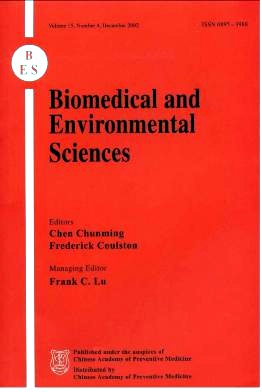Influence of Phenobarbital and Carbon tetrachloride on the Modulation of Tissue Retention Profile of Hexachlorocyclohexane in Rats
-
Key words:
- Hepatic metabolic activity /
- Residue /
- Sodium phenobarbital /
- Carbon tetrachloride /
- Hexachlorocyclohexane /
- Accumulation
Abstract: The study was designed to investigate the role of hepatic metabolic activity on body burden of HCH residue. Male albino rats were orally administered 0, 5, and 10 mg/kg HCH for 90 days, followed by either sodium phenobarbital or carbon tetrachloride treatment for 0, 15 and 30 days after withdrawal of their respective HCH administration. The liver weight was significantly increased at 30 days after the administration of phenobarbital and carbon tetrachloride in both 5 mg and 10 mg/kg HCH withdrawal groups when compared to control. HCH residue was maximun in fat followed by adrenal>thymus>liver>kidney>spleen>testes>brain>plasma. Carbon tetrachloride caused an accumul-ation of HCH residues in the liver 15 and 30 days after administration of both doses of HCH. Phenobarbital did not show significant variation in HCH residues in hepatic tissue. Phenobarbital treatment caused significant induction of hepatic RED, APD, AHH, GST and QR activities. Significant decreases in activities were observed by carbon tetrachloride when compared to animals treated with HCH alone. The overall results clearly suggest the role of P450 protein on the body burden of HCH residues.
| Citation: | RAVINDRA N.KHANNA, MUKUL DAS, MOHINI ANAND. Influence of Phenobarbital and Carbon tetrachloride on the Modulation of Tissue Retention Profile of Hexachlorocyclohexane in Rats[J]. Biomedical and Environmental Sciences, 2002, 15(2): 119-129. |







 Quick Links
Quick Links
 DownLoad:
DownLoad: